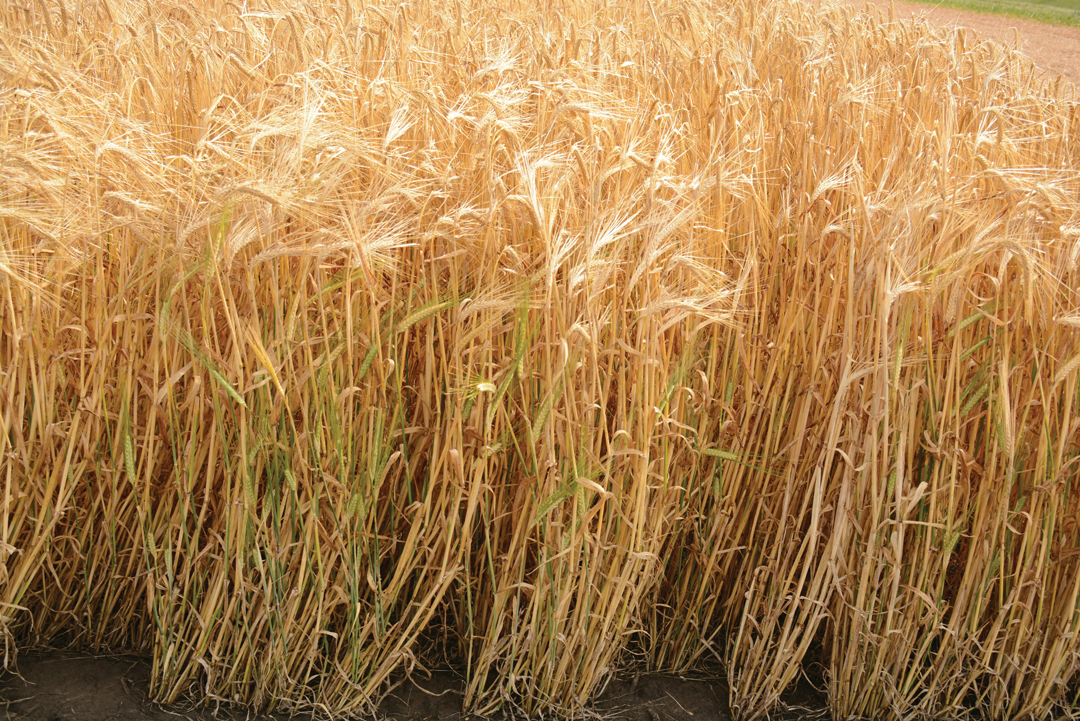A NEW HOPE
BY TRUDY KELY FORSYTHE • PHOTO COURTESY OF FIELD CROP DEVELOPMENT CENTRE
TR19655. No, it’s not the name of a robot from the latest Star Wars movie. Rather, it’s the newest two-row malting barley variety developed by the Field Crop Development Centre (FCDC) at Olds College.
A spring barley, TR19655 has performed well in field trials. It also has the low protein, high extract, good enzymes and very low beta-glucans all segments of the malting industry require. Agronomically, it has good resistance to multiple diseases, which is particularly suited to the black and grey soil zones where risk can be highest, and it exhibits good yield potential and stability across Western Canada. In short, it’s a winner.
Kofi Agblor, FCDC program director, said it is very important to continue to replace current varieties with new ones that exhibit improved agronomics, quality and yield. Development of new, multi-use barley varieties supports the entire barley value chain. Just like those sci-fi robots, barley varieties eventually need to be replaced by newer models. The renewal process addresses disease threats as they evolve and takes advantage of cutting-edge genetics.
For farmers, new varieties with improved yield, quality and agronomic characteristics increase profits and decrease the need for inputs. Though quality specifications are their priority, higher yield also benefits maltsters, brewers and distillers as this increases security of supply in difficult growing years.
Development is a long process. A new variety must prove better than those already on the market. FCDC breeders made the initial cross for TR19655 in spring 2011 and it received approval for registration from the Prairie Grain Development Committee (PGDC) in spring 2022.
This 11-year stretch included three years of testing at various sites throughout Western Canada and scrutiny by the PGDC Prairie Recommending Committee for Oat and Barley, which evaluated the agronomics, quality and pathology of TR19655. The Committee recommended the Canadian Food Inspection Agency allow its commercialization based on its strong quality profile and disease resistance package.
Once it registers a new variety, FCDC offers it publicly to seed companies that bid to commercialize it. TR19655 received no takers as of its first bid deadline, so it is now open for commercialization. This means the first company to request the rights for commercialization can develop it. Once a company takes it on, the process to increase the seed and market it will take another three to four years. “Depending on how promising the variety is, they may increase the seeding in other locations like New Zealand or California to get it to market sooner,” said Flavio Capettini, FCDC barley breeder.
As for a permanent name for TR19655, the breeders and seed company will choose one when, and if, the variety is picked up for commercialization. If it isn’t, Capettini said FCDC has a productive program with many more varieties in development. “If [TR19655] is not commercialized, we already have more coming next year,” he said.
FCDC began breeding barley in the early ’70s and focused primarily on barley for feed and forage. In 1992, it added its malt barley breeding program and has made many advances since. This includes the launch of a digital initiative that will allow breeders to integrate data on the physical and genetic characteristics of barley with data about western Canadian growing conditions. The support tool will help breeders make better decisions. “We believe we can build a platform with enough robustness to really make a contribution to the development of varieties,” said Agblor.






Comments